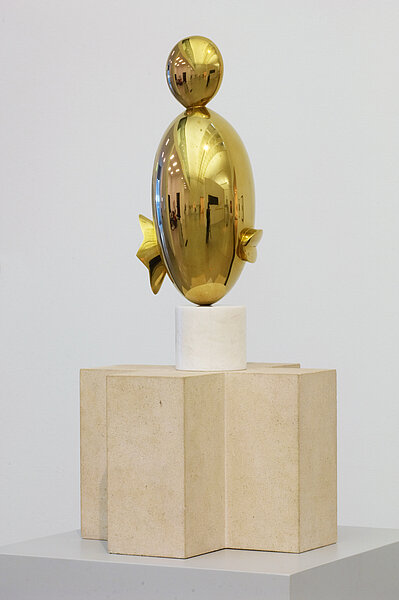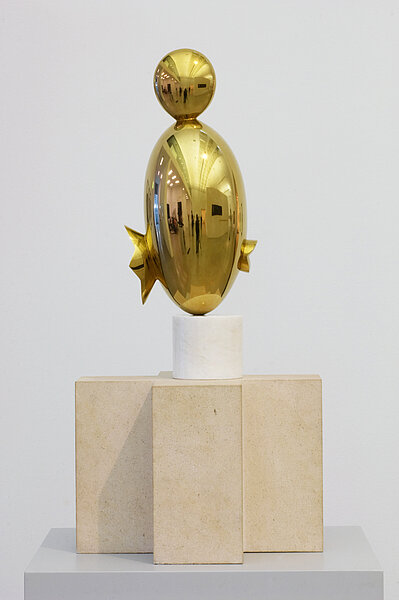
Brâncuşi, Constantin
La Négresse blonde II* *Der Originaltitel spiegelt den kolonialen Entstehungskontext und entspricht nicht heutigen Maßstäben einer geschichts- und diversitätsbewussten Sprache.
The original title reflects the colonial context of origin and does not correspond to today's standards of a history and diversity conscious language.
1933
| Object description | Bronze casting |
|---|---|
| Object category | plastic |
| Material |
Figure:
bronze
Sockel oben:
marble
Sockel unten:
stone
|
| Technique |
Figure:
bronze casting
Base:
sculpting
|
| Dimensions |
Gesamtmaß:
height: 75 cm,
width: 37 cm,
depth: 37 cm
Zylinder aus Marmor:
height: 9,5 cm,
diameter: 10,5 cm
Kreuzform aus Stein:
height: 25,3 cm,
width: 36,4 cm,
depth: 36,4 cm
Detailmaß:
height: 12,8 cm
Bronzefigur:
height: 46 cm,
width: 19 cm,
depth: 13,5 cm
|
| Year of acquisition | 1988 |
| Inventory number | P 289/0 |
| Creditline | mumok - Museum moderner Kunst Stiftung Ludwig Wien |
| Rights reference | Bildrecht, Wien |
| Further information about the person | Brâncuşi, Constantin [GND] |
| Literature | Laboratorium Moderne/Bildende Kunst, Fotografie und Film im Aufbruch |
The Rumanian-born sculptor Constantin Brancusi arrived in Paris in 1904. Initially influenced by Rodin, he rapidly found a place in the Parisian avantgarde art scene. Brancusi’s works are marked by an extremely subtle handling of abstraction. At the centre of his efforts is a quest for the greatest possible simplification without, however, being reductive. In the harmonious, symmetric basis to "La negresse blonde" [The Blonde Negress] the viewer can discover numerous asymmetries and irregularities. The form of the human head is radically reduced to an egg shape but the lips and the knotted hair that are added mark the face and the back of the head. The way the sculpture is mounted on the two-part base is slightly off-set and thus asymmetrical. The smooth reflective surface emphasises the strict form. If one goes around the sculpture, a further effect of the reflective surface can be seen: the reflections allow the apparently weightless sculpture to interact with its surroundings. The inclusion of the form of the base in the sculpture itself also questions the traditionally clear differentiation between the object and its surroundings. Even though "La Negresse blonde" has no individual details, the irregularities, the insistent deviation from symmetry, lend it a liveliness and presence. The material is also enlivened by the fact that it determines the identity of who it depicts: the statue of the "blonden Schwarzen / Blonde Black Woman" made of bronze is a further development of the marble "Negresse blanche / White Black Woman" from 1923.
© mumok – museum moderner kunst stiftung ludwig wien

